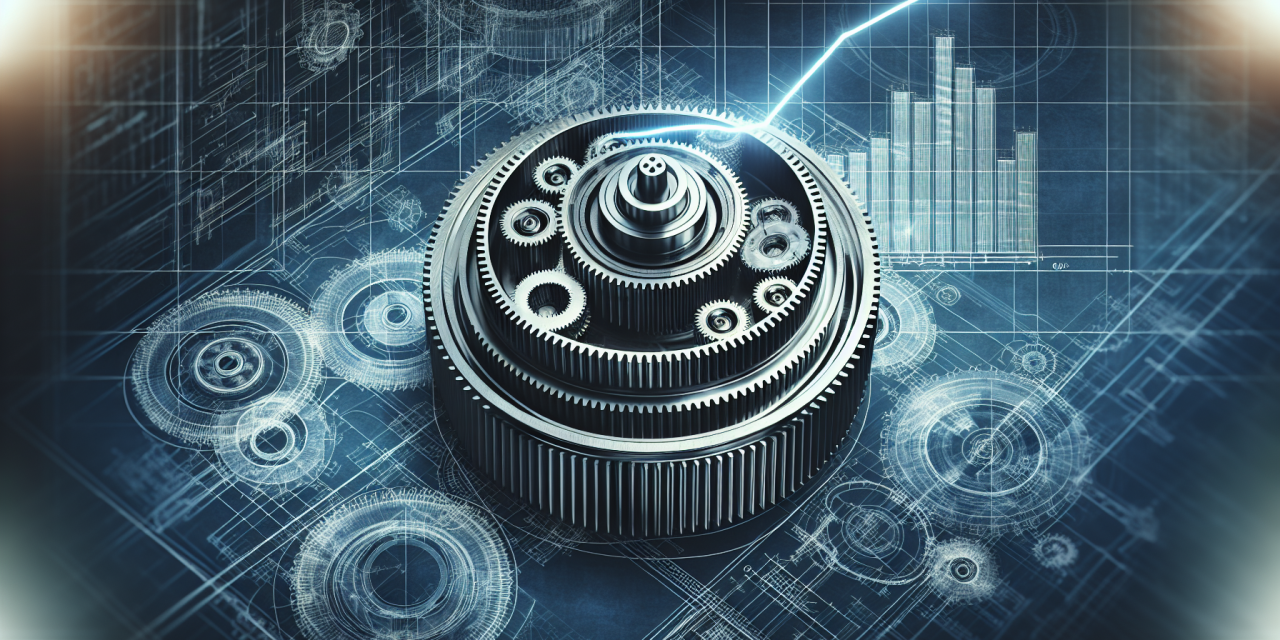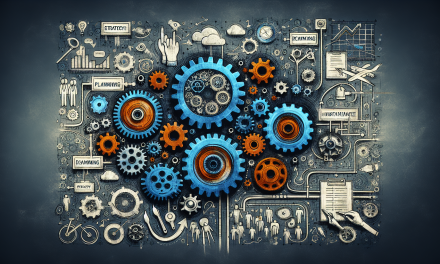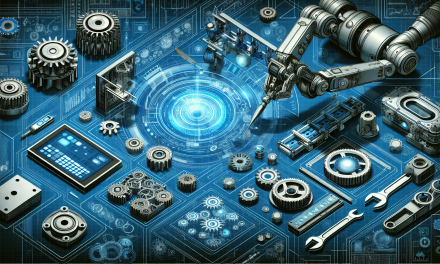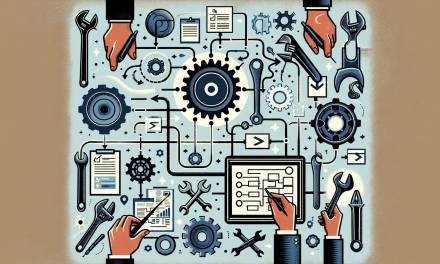Table of Contents
- Introduction
- Understanding Rotating Equipment
- Why Optimize Rotating Equipment?
- Continuous Reliability Improvement (CRI)
- Strategies for Optimization
- Case Studies
- FAQs
- Conclusion
Introduction
Rotating equipment plays a pivotal role in various industrial sectors, from power generation to manufacturing. As organizations continually strive for operational excellence, understanding how to optimize these critical assets becomes essential. In this post, we will explore how rotating equipment optimization aligns with continuous reliability improvement (CRI), showcasing strategies that not only enhance performance but also ensure long-term reliability.
Understanding Rotating Equipment
Rotating equipment encompasses various machinery and components that rely on rotational motion to perform their functions. Examples include pumps, turbines, compressors, and motors. These machines are vital for transporting fluids, converting energy, and facilitating numerous processes in industrial settings. However, due to their complex nature and crucial roles, they are often prone to wear and failure, necessitating a keen focus on optimization strategies.
Types of Rotating Equipment
Identifying the various types of rotating equipment can help engineers and operators understand their specific optimization needs. The major categories include:
- Pumps: Used for moving liquids, these devices come in different designs, such as centrifugal and positive displacement pumps.
- Compressors: Essential for increasing the pressure of gases, compressors are commonly used in refrigeration and air conditioning systems.
- Turbines: Often utilized in power generation, turbines convert kinetic energy from fluids into mechanical energy.
- Motors: These are electric devices that convert electrical energy into mechanical energy, powering various equipment.
Challenges with Rotating Equipment
Despite their importance, rotating equipment faces several challenges, including:
- High maintenance costs due to breakdowns.
- Unplanned downtime leading to production delays.
- Energy inefficiencies that can significantly impact operational costs.
Why Optimize Rotating Equipment?
Investing in the optimization of rotating equipment offers numerous benefits:
- Enhanced Performance: Regular optimization can lead to improved efficiency and effectiveness of the machinery.
- Cost-Reduction: By minimizing energy consumption and preventing failures, companies can significantly reduce operational expenses.
- Extended Equipment Life: Through proper maintenance and optimization, the lifespan of rotating equipment can be prolonged, yielding a higher return on investment.
- Improved Safety: Regular optimization helps anticipate potential failures that could pose safety risks to personnel and equipment.
Continuous Reliability Improvement (CRI)
Continuous reliability improvement (CRI) is a fundamental concept that underpins the optimization of rotating equipment. It revolves around a systematic approach aimed at enhancing the reliability and performance of machinery through ongoing assessment and improvement.
The CRI Process
The CRI process involves the following stages:
- Assessment: Identify and evaluate the current state of rotating equipment efficiency and reliability.
- Implementation: Deploy strategies to enhance reliability, focusing on maintenance and operational practices.
- Monitoring: Continuously observe equipment performance metrics to identify areas for further improvement.
- Feedback Loop: Utilize the data gathered during monitoring to inform future assessments and adjustments, completing the cycle.
Strategies for Optimization
Implementing effective strategies for rotating equipment optimization can lead to substantial gains in reliability. Here are several practical approaches:
1. Predictive Maintenance
Instead of relying solely on reactive maintenance, organizations can implement predictive maintenance techniques. Through technologies such as vibration analysis, thermal imaging, and oil analysis, companies can foresee potential failures, allowing for timely interventions.
2. Regular Training and Skill Development
Equipping teams with the knowledge to operate and maintain rotating equipment optimally is crucial. Ongoing training ensures that staff remains updated on the latest technologies and best practices in the industry, fostering a culture of continuous improvement.
For instance, considering the Rotating Equipment & Continuous Reliability Improvement CRI Course can deepen your team’s understanding of essential concepts and practical applications.
3. Energy Efficiency Programs
By conducting energy audits and implementing energy management systems, organizations can identify inefficiencies in their rotating equipment’s operation. By integrating strategies from resources like Your Ultimate Guide to Developing and Implementing an Energy Management System, organizations can not only enhance operational reliability but also realize significant energy savings.
4. Equipment Upgrades
Sometimes, the best optimization approach is to update or replace aging equipment. Investing in newer technologies can lead to increased efficiency and reliability, aligning with sustainability goals.
5. Process Optimization
Improving overall processes that involve rotating equipment can yield remarkable results. Techniques and strategies for enhancing process operations can be found in articles like Mastering Process Plant Optimization and Energy Conservation Strategies for Operational Excellence.
Case Studies
Real-world case studies showcase the impact of rotating equipment optimization and continuous reliability improvement.
Case Study 1: Power Generation Plant
A power generation plant implemented predictive maintenance programs on their turbines, reducing unplanned downtime by 30%. As a result, they increased reliability and operational efficiency, leading to a significant return on investment.
Case Study 2: Manufacturing Facility
A manufacturing facility invested in training their maintenance team on the latest technologies and practices. This educated workforce improved their response time to equipment issues, enhancing overall reliability while reducing maintenance costs.
FAQs
What is rotating equipment optimization?
Rotating equipment optimization involves improving the performance and reliability of machinery that operates via rotational motion, such as pumps, turbines, and compressors. Techniques include predictive maintenance, energy efficiency programs, and staff training.
Why is continuous reliability improvement important?
Continuous reliability improvement is vital for maximizing the lifespan and effectiveness of rotating equipment. It allows organizations to proactively address potential issues, reducing costs while enhancing safety and performance.
How can organizations implement CRI?
Organizations can implement CRI by assessing current equipment performance, using data-driven insights to inform decisions, and establishing a feedback loop that continuously drives improvement.
What are the benefits of predictive maintenance?
Predictive maintenance minimizes unplanned downtime, lowers maintenance costs, and enhances equipment reliability. It enables organizations to address potential problems before they escalate, improving overall operational efficiency.
Conclusion
In conclusion, rotating equipment optimization paired with continuous reliability improvement forms the backbone of efficient industrial operations. By understanding the types of rotating equipment, recognizing the importance of optimization, and employing effective strategies, organizations can significantly enhance their operational effectiveness. As industries face increasing pressure to improve reliability while controlling costs, the marriage of these two concepts will undoubtedly pave the way for a more sustainable future.
For further insights into reliability improvement and best practices, you may also be interested in reading A Comprehensive Guide to the ASME Boiler and Pressure Vessel Code and Mastering Heat Exchangers: Comprehensive Insights. These resources can complement your knowledge of rotating equipment and energy management goals.





